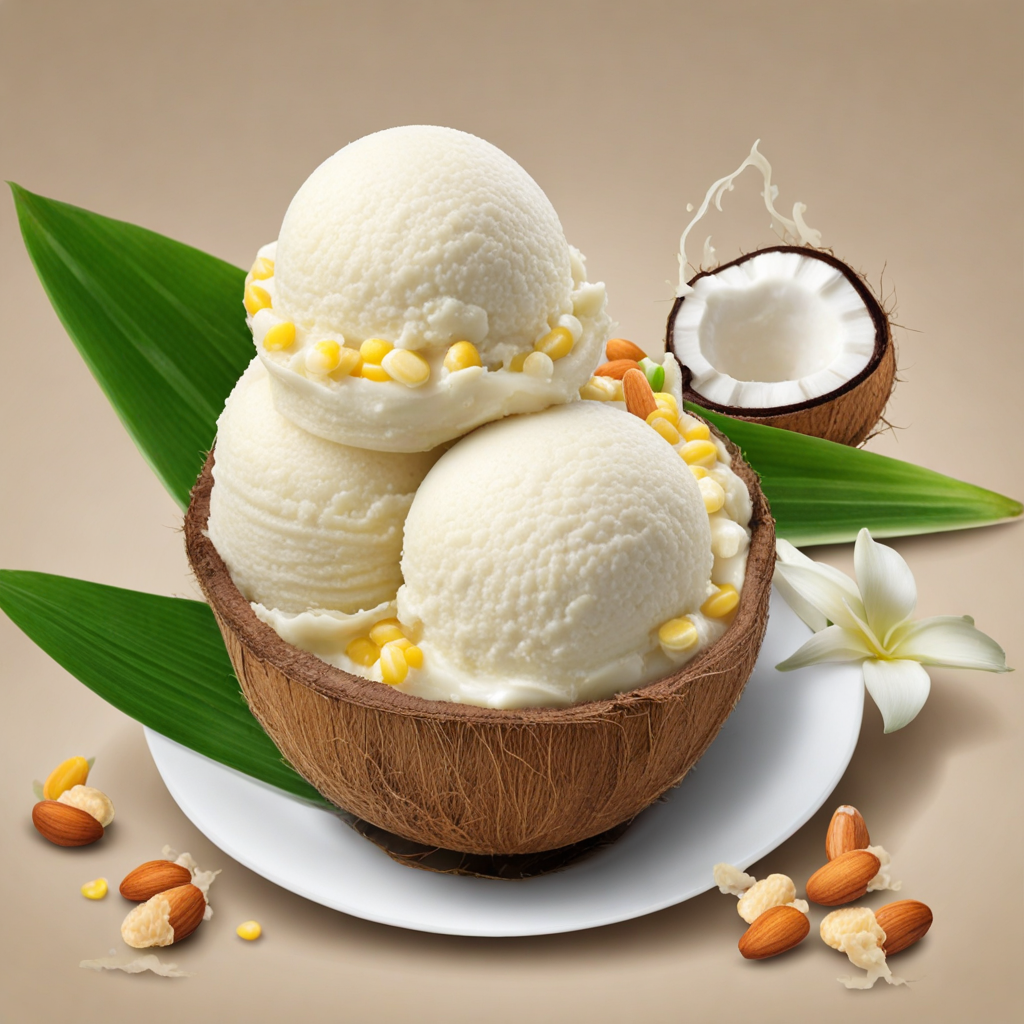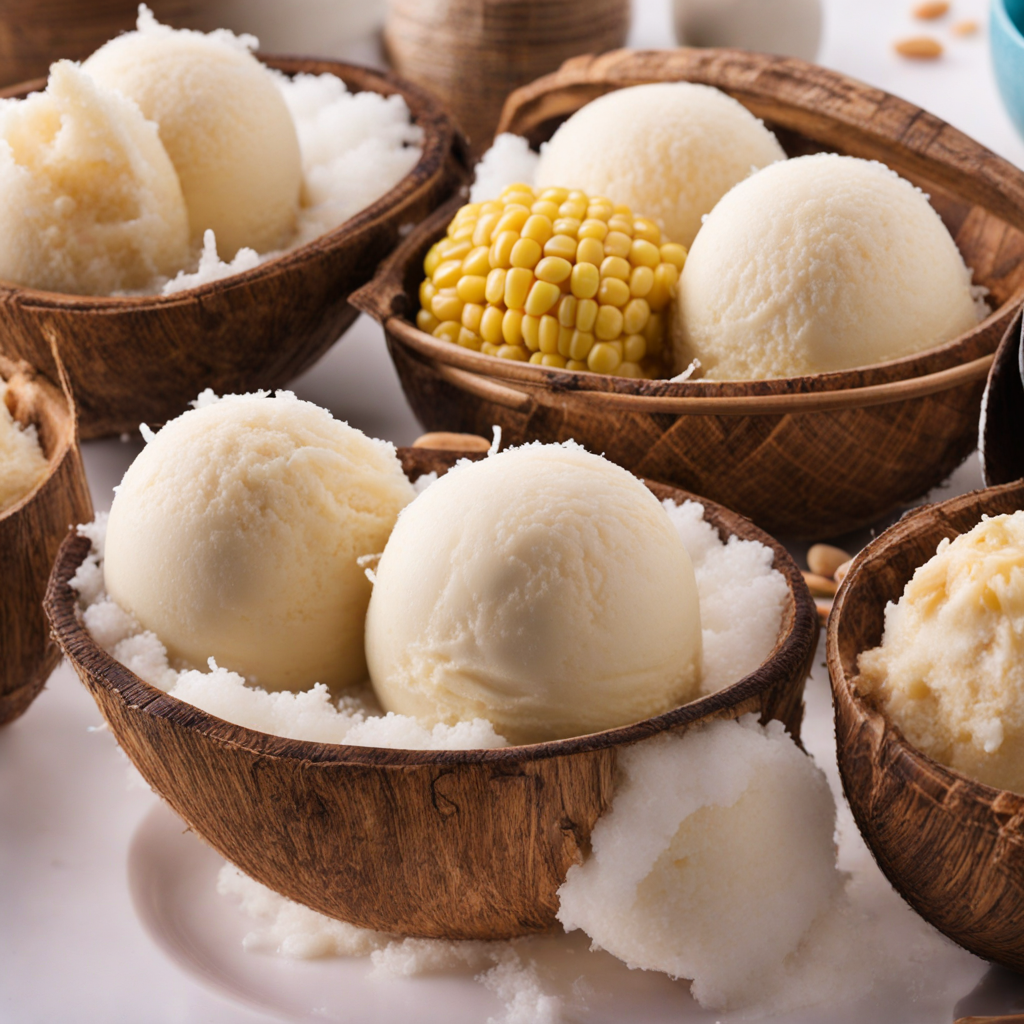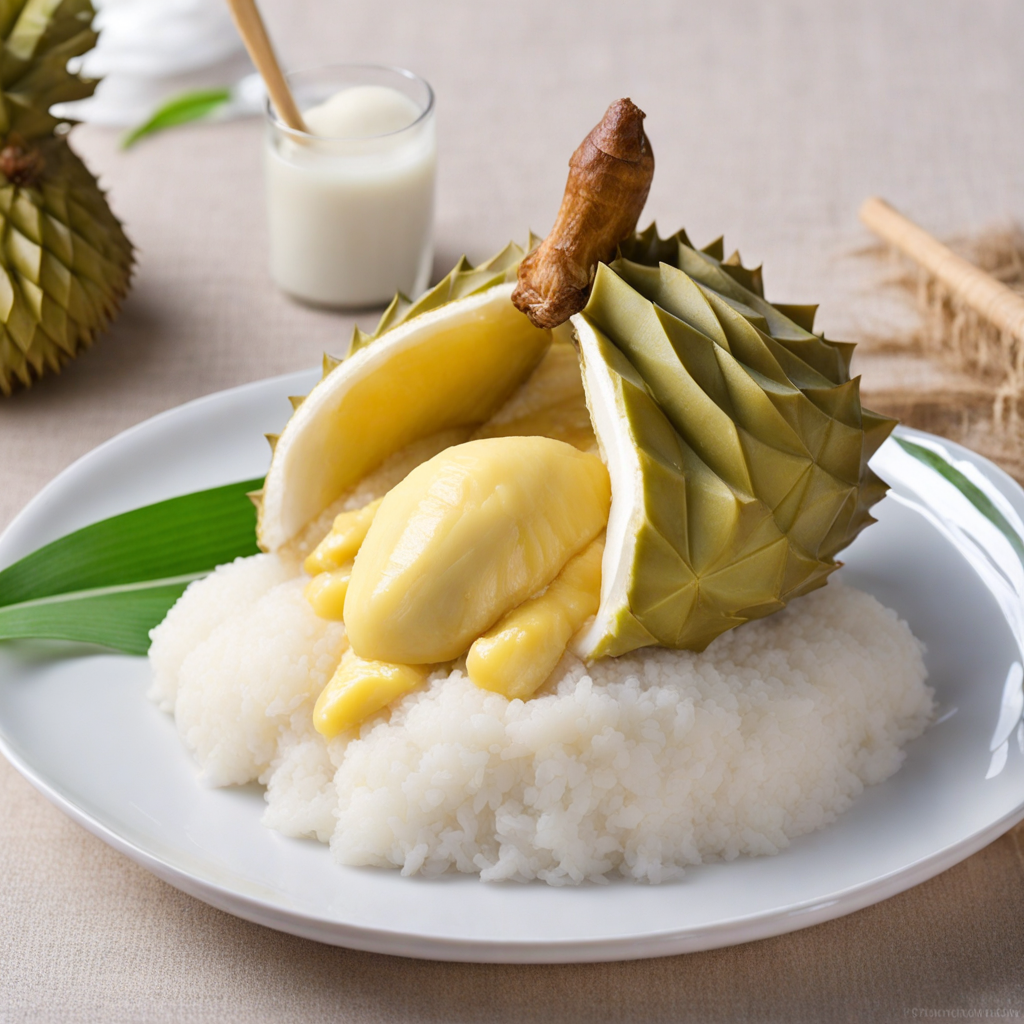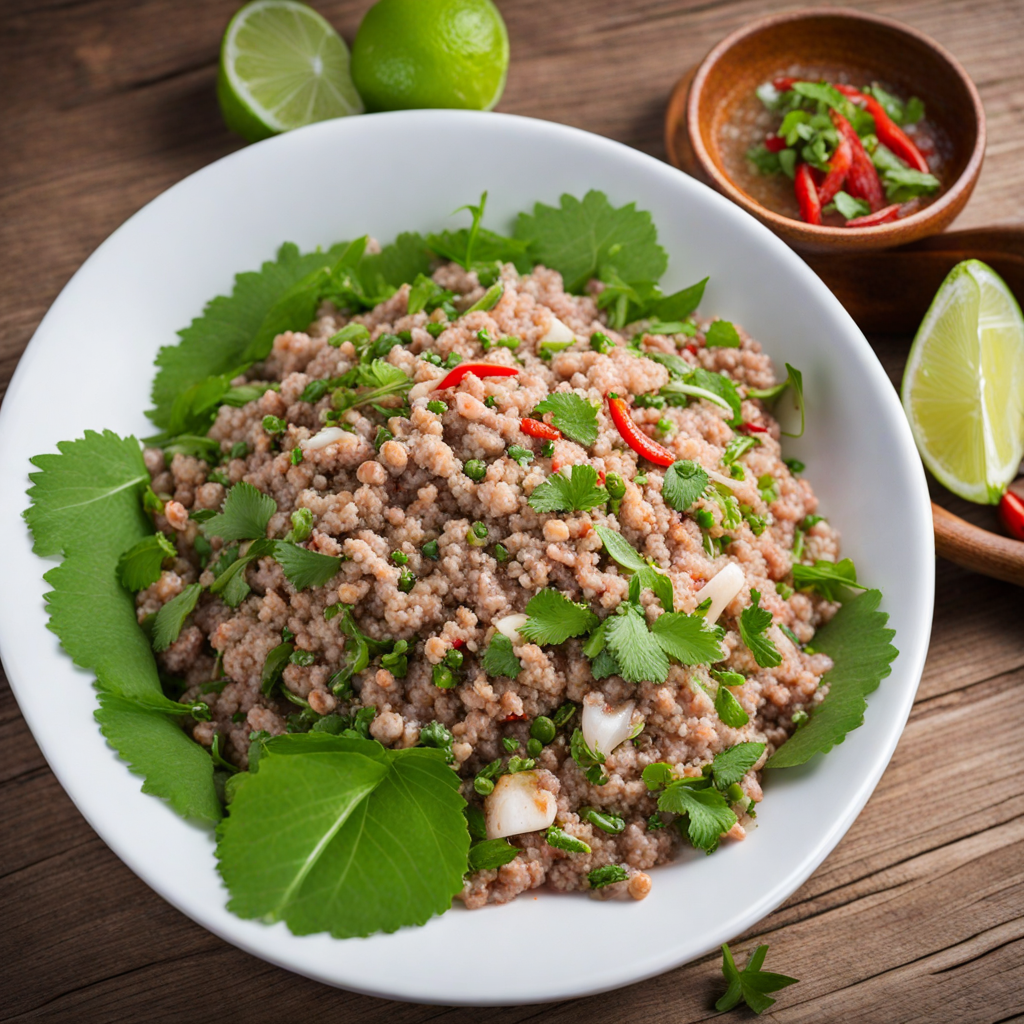Coconut Ice Cream
Coconut Ice Cream, a beloved Thai treat, is a delightful indulgence that captures the essence of tropical flavors. Made from rich, creamy coconut milk, this dessert offers a silky texture that melts in your mouth, making each bite a refreshing experience. The natural sweetness of the coconut is complemented by a subtle hint of salt, enhancing its flavor profile, while the creaminess provides a comforting base that leaves you wanting more. Served in a young coconut shell or a cup, it presents a visually appealing dish that embodies the spirit of Thailand’s vibrant street food culture. To enhance its unique flavor, Coconut Ice Cream is often topped with an array of delectable ingredients. Common garnishes include roasted peanuts, sweet sticky rice, and a drizzle of coconut syrup, which add contrasting textures and an extra layer of sweetness. Some vendors also offer fresh fruits like mango or jackfruit, incorporating seasonal delights that elevate the dessert further. With every spoonful, you experience a delightful harmony of flavors that transports you to the sun-kissed beaches of Thailand. This dessert is not just about taste; it’s an experience that reflects Thailand’s culinary traditions. Enjoyed as a treat on hot days or as a satisfying conclusion to a meal, Coconut Ice Cream invokes a sense of nostalgia and joy. Whether savored at a bustling night market or in a quiet café, this delightful dessert invites you to explore the rich flavors of Thai cuisine, leaving a lasting impression that lingers long after the last spoonful.
How It Became This Dish
The Sweet Journey of ไอศกรีมกะทิ (Coconut Ice Cream) in Thailand #### Origins and Early Beginnings The history of ไอศกรีมกะทิ (coconut ice cream) in Thailand is deeply intertwined with the country's tropical climate, abundance of coconuts, and rich culinary traditions. The origins of ice cream can be traced back to ancient civilizations, with the earliest forms believed to have emerged in cultures like that of the Chinese, who enjoyed a mixture of rice and milk frozen with ice. However, the specific form of coconut ice cream that we know today is a product of Southeast Asian culinary practices, particularly in countries with a strong coconut culture like Thailand. Coconuts have been a staple in Thai cuisine for centuries, used not only for their water and flesh but also for their milk, which is extracted from the grated meat. This creamy, rich ingredient became a cornerstone in many Thai desserts, from sweet sticky rice to various puddings. The introduction of ice, especially during the colonial period when refrigeration technology began to spread, allowed Thai cooks to experiment with frozen desserts, leading to the creation of coconut ice cream as we know it today. #### Cultural Significance Coconut ice cream is more than just a refreshing treat; it holds a special place in Thai culture and daily life. In Thailand, street food is an integral part of the culinary landscape, and coconut ice cream is a beloved item found in markets and food stalls across the country. It is often served in a coconut shell, enhancing the tropical experience and showcasing the fruit that is central to its flavor. The preparation and enjoyment of coconut ice cream reflect the communal aspect of Thai culture. Families and friends often gather to savor this delightful treat, making it a popular choice during festivals, fairs, and celebrations. The ice cream is not simply a dessert; it represents hospitality and the joy of sharing food with loved ones. This custom is rooted in Buddhist values of generosity and community, making coconut ice cream a symbol of togetherness. #### Development Over Time As with many traditional foods, coconut ice cream has evolved over the years, adapting to changing tastes and innovations in food preparation. In the early days, the ice cream was likely made using simple methods, with ingredients like fresh coconut milk, sugar, and ice. Vendors would churn the mixture by hand, incorporating air to create a creamy texture. With the advent of modern refrigeration and advancements in culinary techniques, the production of coconut ice cream became more efficient. The introduction of electric ice cream makers allowed for a smoother and creamier end product. Additionally, the growing popularity of coconut ice cream among tourists and locals alike led to various adaptations and flavor innovations. Today, one can find not only traditional coconut ice cream but also unique variations infused with local ingredients like mango, sweet corn, or even durian. The rise of health consciousness has also influenced the evolution of coconut ice cream. Many vendors now offer vegan options made with coconut milk, appealing to a broader audience. This shift not only reflects changing dietary preferences but also emphasizes the versatility of coconut as an ingredient. #### Modern-Day Coconut Ice Cream In contemporary Thailand, coconut ice cream has transcended its humble street food origins to become a culinary icon. It is now featured in upscale restaurants and cafes, where chefs experiment with gourmet presentations and innovative flavor combinations. Artisanal versions of coconut ice cream incorporate organic ingredients and traditional Thai herbs, such as pandan or lemongrass, adding new dimensions to this classic treat. Moreover, coconut ice cream has gained international acclaim. As global interest in Thai cuisine has surged, so too has the popularity of its desserts. Food enthusiasts around the world seek authentic experiences, and coconut ice cream stands out as a must-try item for anyone exploring Thai flavors. It has even inspired variations in other countries, where chefs have adopted the concept and added their local twists. #### The Future of Coconut Ice Cream Looking ahead, the future of coconut ice cream in Thailand remains bright. As sustainability and ethical food practices become increasingly important, many producers are focusing on sourcing coconuts from local farmers, ensuring fair trade and promoting environmental responsibility. This trend resonates with consumers who are becoming more conscious of their food choices. In addition, the growing trend of food tourism in Thailand offers an opportunity to further promote coconut ice cream. Culinary tours that include visits to local markets and ice cream stalls provide tourists with a hands-on experience of the process, from selecting fresh coconuts to enjoying the final product. These experiences not only promote the tradition of coconut ice cream but also help to preserve the cultural practices of local vendors. #### Conclusion The story of ไอศกรีมกะทิ is a delightful journey through Thailand's rich culinary heritage. From its origins rooted in the tropical bounty of coconuts to its status as a beloved street food and a symbol of community, coconut ice cream encapsulates the essence of Thai culture. As it continues to evolve and adapt to modern tastes and trends, coconut ice cream remains a delicious reminder of Thailand's vibrant food scene and the enduring connection between cuisine and cultural identity. Whether enjoyed in a bustling market or a chic café, each scoop of coconut ice cream tells a story—a story of tradition, innovation, and the simple joy of sharing something sweet with others.
You may like
Discover local flavors from Thailand







